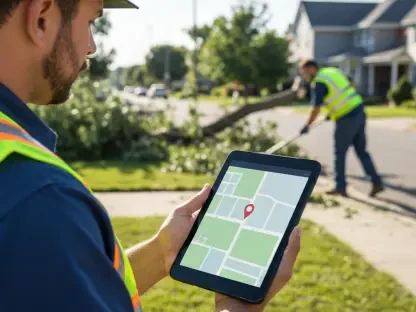Mobile credentialing is on the rise, and with over 92% of Americans possessing a smartphone, the future of mobile access solutions looks bright. With intrinsic features such as enhanced security, increased flexibility, and centralized control, mobile credentialing offers customers and security providers convenience and peace of mind. With a myriad of use cases, the access control industry has been the outstanding early adopter, giving us a glimpse into how mobile credentials could transform industries.
What are mobile credentials?
If you use your phone to ‘tap to pay’, or you’re able to remotely start your car via an app, you’ve been using mobile credentials. Simply put, mobile credentials are unique electronic documents used for identification that can be stored on a mobile device (typically a smartphone or tablet). The unique documents allow users to securely access online services, apps, and even physical locations. Mobile credentials combine three aspects of security:
- Something personal (a PIN or password)
- Something physical (a tablet or smartphone)
- Something biometric (a fingerprint or face scan)
Hackers and threat actors would need all three elements to successfully access user accounts and data. This powerful trifecta of data protection makes mobile credentials a compelling choice for access control and security providers across a number of industries. Mobile credentials are a multifactor authentication process. Users will first need to provide a username and password, after which an OTP is sent to the registered mobile device. This is usually followed by biometric authentication, leveraging the device’s security features.
The rise of mobile credentials in access control
One of the best use cases of mobile credentials is in access control. The education sector has grabbed hold of the technology, with research indicating that 80% of American universities have ditched fob keys and access cards, in favor of mobile credentials. With thousands of newcomers each year, mobile credentials reduce the cost of issuing new access cards to students, and in the case of lost cards, prevent students from forking out for replacements.
There are a number of benefits to mobile credentials for access control. First, it’s incredibly convenient. The days of carrying physical access cards are over, with users able to enter premises and log into accounts with just a smartphone or tablet, something they overwhelmingly likely already have. Second, mobile credentials boast enhanced security. One of the biggest pitfalls of using traditional access control methods is that a lost or stolen card allows anyone to access a building. With mobile credentials, multi-factor authentication provides heightened security, especially with the addition of biometric authentication. Lastly, mobile credentialing allows organizations to scale access control. It eliminates the need to manage a large repository of cards, enabling security teams to remotely issue and revoke access. This is particularly important in buildings where restricted access areas must be controlled and where traditional access control often dismally fails.
Other benefits of mobile credentials
While the access control industry has made major advances in adopting mobile credentials, the benefits of this technology can be applied widely to numerous sectors. With multi-factor authentication, the digital key creates a deep layer of security through unique documents assigned to a single user. Here are some of the benefits of this technology:
- SecurityWith over 800,000 cyberattacks each year, personal online security is a commodity few can afford to be without. Mobile credentialing offers high levels of security while prioritizing convenience and ease of use. Security tools that only use traditional credentials, like usernames and passwords, are highly susceptible to hacking. In using mobile credentials, a hacker would need to not only bypass traditional authentication but also take possession of the physical mobile device connected to an account. This drastically reduces the possibility of security breaches.
- Single Sign-On (SSO)Single Sign-On is a firm favorite, allowing users to log in to multiple accounts using a single set of credentials. While the convenience is unmatched, a user is left vulnerable if an attacker gains control of those credentials. Mobile credentials provide additional security to SSO. Because the technology is embedded with multi-factor authentication, simply having the unique digital key is not enough for a threat actor to gain control of user accounts.
- FlexibilityFor security teams across industries, mobile credentialing provides a high level of flexibility. Access can easily be issued and revoked, which gives the same level of ease and convenience to service providers as it does to customers.
Why mobile credentials work so well in access control
If there’s one thing we almost all have in common, it’s that our mobile devices are always on hand. Leveraging this for access control has a number of advantages for the industry and users.
Convenience is one of the biggest pull factors for mobile credentials. According to research, 19% of college students lose their access cards every year. That equates to one in every five students left temporarily stranded without access to buildings and premises, meal tickets, and library passes. On average, it costs between $5 and $50 to replace. Opting for mobile credentials means that students forgetting and/or misplacing cards is a thing of the past, creating convenience for students and staff.
Security has been mentioned ad nauseam in this article, but only because mobile credentials provide superior data protection! Critics are quick to point out that mobile theft is a common occurrence, and that anyone with your mobile device has instant access to your world of data, and potentially even access to your house. However, our tablets and cell phones are so integral to our daily lives that users are quick to notice their absence. This prompts actions to disable remote access to accounts and applications, further reducing the risk of fraud and cyberattacks. As a service provider, finding a solution that doesn’t require users to create complex security passcodes while still guaranteeing a high level of data protection is truly the sweet spot of secure customer service, and mobile credentialing provides that.
Flexibility in terms of access control is a game-changer. With the ability to issue, revoke, and restrict access, security teams appreciate the streamlined process for users and providers alike.
There’s also a case for cost-cutting measures; with mobile devices, there’s no need to procure, issue, and collect physical cards, keys, and/or badges that typically feature in the access control industry.
The integration potential of mobile credentialing enables access control teams to seamlessly integrate across apps and services. In residential and corporate buildings, this makes guest management processes simple and efficient. Visitors, service providers, and residents can easily access the areas they need to with a simple, mobile-based onboarding process. The integration functions also enable additional features such as location tracking and time-stamped access, providing security teams with data analytics and insights.
Lastly, with mobile credentials leveraging mobile devices, there’s the added benefit that mobile credentials are a future-proofed technology, updating security measures to match advancements and innovations in mobile technology.
Conclusion
With mobile credentials, the possibilities are endless in creating a secure, convenient online environment. Mobile credentialing has the potential to offer a number of benefits to various industries, transforming your mobile device into a key to not only access the online world, but the physical one as well. The multifactor authentication gives peace of mind to customers, and allows service providers to heighten security without compromising ease of use. Get ready to unlock doors, quite literally, with mobile credential solutions.









